Westerbork Deportation
Lagerkommandantur Westerbork Rudolf Breslauer (1903-1944) was a photographer and lithographer by trade, educated at the Academy for Art Photography in Germany. He was married to Bella Weihsmann and had three children: Stephan, Mischa, and Ursula. They fled Leipzig and settled in the Netherlands in 1938. In the summer of 1940, non-Dutch Jews were forced to leave Leiden because the city was near the sea. The Breslauers moved to a boarding house in Alphen aan de Rijn and left for Utrecht shortly thereafter. On February 11, 1942, they were sent to Westerbork, where Rudolf Breslauer was ordered to make passport photos of incoming camp prisoners and film daily life in Westerbork. In the spring of 1944, the camp commander commissioned Breslauer to make what would later be known as the Westerbork-film. In September 1944, Breslauer and his family were deported to Theresienstadt with other privileged prisoners and subsequently deported to Auschwitz in October 1944. Only Ursula survived the camp. Anna Maria "Settela" Steinbach was born on December 23, 1934 in Buchten (the seventh of ten children). Her father, Heinrich "Moeselman" was a trader and a violinist, her mother, Emilia "Toetela" ran their household. In July 1943, the German occupation authorities in the Netherlands instituted a prohibition against the movement of wagons and concentrated them in assembly camps. Settela and her family ended up in Eindhoven, and were rounded up and transferred to Westerbork transit camp on May 16, 1944. Settela was filmed in Westerbork on the May 19, 1944 train transport to Auschwitz, moments before the railcar door was bolted and locked. The 246 Sinti and Roma, including Settela and some of her family members, were in goods wagons 12 to 17, just at the moment that Jewish prisoner Rudolf Breslauer was ordered by camp commander Gemmecker to film the events. Settela was gassed in Auschwitz-Birkenau, probably during the night of 2-3 August 1944, possibly along with her mother, two brothers, and two sisters, and other Sinti and Roma during the Zigeunerlager liquidation. Consult "Settela" by Aad Wagenaar and the documentary film "Settela" by Dutch filmmaker Cherry Duyns (1994). WS, train entering station. Rows of people with armbands "FK" [Fliegende Kolonne]. One of the women with the "FK" is Lenie Nijstad Cohen. Well-dressed Jews with Star of David on their coats on the platform, some getting bundles off the train. Soldiers checking documents. Guards with dogs. Another train (goods wagons) pulls into the station from which men wearing clogs get out, caps on their shaven heads. These are Jewish prisoners from Vught concentration camp being sent to Westerbork on punishment. LS, prisoners on platform. INTs, men with shaved heads (light on left), sharing bread. Men being interviewed by men and women, one of them has Star of David on her jacket, typing on typewriters. Men in wooden clogs, walking by. People with stars with bundles, others with "FK" armbands. Barracks can be seen in the background. Well-dressed men and women. Obvious confusion. Holding children. 01:08:30 MS, crowd in front of freight car. Preparations for the departure of the weekly deportation train from Westerbork. People wait on the platform for their turn to climb in. Two officers walk by. People wave goodbye from inside of train. Sick woman (Ms. Frouwke Kroon - 1882-1944) lying on a wooden cart being wheeled on train platform. 01:09:58 Sophia de Groot at far left of the door opening on train wagon #9, gesturing to someone on the platform. Farewell handshake. Boxes filled with food, cigarettes, provisions for the journey. WS, interior of the car with people sitting on floor. 01:10:30 White chalk sign on freight car's door "74 PERS." Sinti girl Settela Steinbach with head scarf (over shaved head), looking through slightly opened car door, May 19, 1944. Doors being closed by Jewish policeman and Westerbork camp inmate Hans Margules. Camp commander Albert Gemmeker walks alongside train, accompanied by his little dog and non-commissioned officers. They review documents. Part passenger train (on the way to Bergen-Belsen [Celle]) part freight train (on the way to Auschwitz) leaving the station at Westerbork. Visible train steam. Officers getting on train. People's faces and hands can be seen through small freight car windows. Long shots of train traveling. 01:13:56 WS, group of men with hammers, disassembling metal objects. Separating pieces from a huge pile of metal pieces. WS, hall with people working behind benches. Taking various machines apart, separating pieces into baskets and wooden barrels with signs: KUPFER, MESSING, ALUMINUM. Blacksmith, piles of pipes. Man w/Star of David on his coat is stripping wire. 01:28:11 WS, women separating wire, machine pressing, indoors.
- EHRI
- Archief
- us-005578-irn1000921
- Film
- DOGS
- Westerbork, Netherlands
Bij bronnen vindt u soms teksten met termen die we tegenwoordig niet meer zouden gebruiken, omdat ze als kwetsend of uitsluitend worden ervaren.Lees meer









